Genetic and economic evaluation of alternative breeding scenarios for community based productivity improvements of three indigenous goat breeds in Ethiopia

Authors:
On station small ruminant researches in Ethiopia were ineffective due to various factors. As alternative, community based breeding program (CBBP) has emerged. In the current CBBPs, sires’ side selection only (SN1) was practiced. The objective of the present work was to compare SN1 by simulating alternative breeding scenarios for Abergelle (AB), Centeral Highland (CH) and Woyto-Guji (WG) goat breeds in Ethiopia. Three scenarios including selection on dam’s side (SN2) in addition to SN1, application of genomic selection (SN3) on SN1 and use of sires from SN1 for mating in additional flocks (SN4) were simulated and compared with SN1 based on the predicted annual genetic gain (PAGG) and discounted profits. The breeding objective traits or selection criteria were six month weight (6mw, kg) for all breeds, average daily milk yield (ADM, kg) and survival to six month of age (SURV) for AB, litter size at birth (LSB) for CH and WG, litter size at weaning (LSW) for CH and kidding interval (KI, days) for WG. ZPLAN + software was used for the simulation. The PAGG for 6mw ranged from 0.086 kg (SN4) to 0.249 kg (SN3) for AB where it ranged from 0.471 kg (SN4) to 0.970 kg (SN3) for ADM for same breed. PAGG ranging from 0.130 kg (SN4) to 0.467 kg (SN3) and from 0.204 kg (SN4) to 0.311 kg (SN3) for CH Gonder and Ambo sites, respectively were simulated whereas this parameter ranged from 0.103 kg (SN4) to 0.271 kg (SN3) for WG. The alternative breeding scenarios to SN1 resulted in better PAGGs, especially for 6mw in three of the goat breeds and for ADM in AB. Based on the PAGGs and profitability we recommend SN2 over SN1. However, SN4 could also be applied, compared to SN1, in view of better profitability and suitability of addressing emerging demands.
